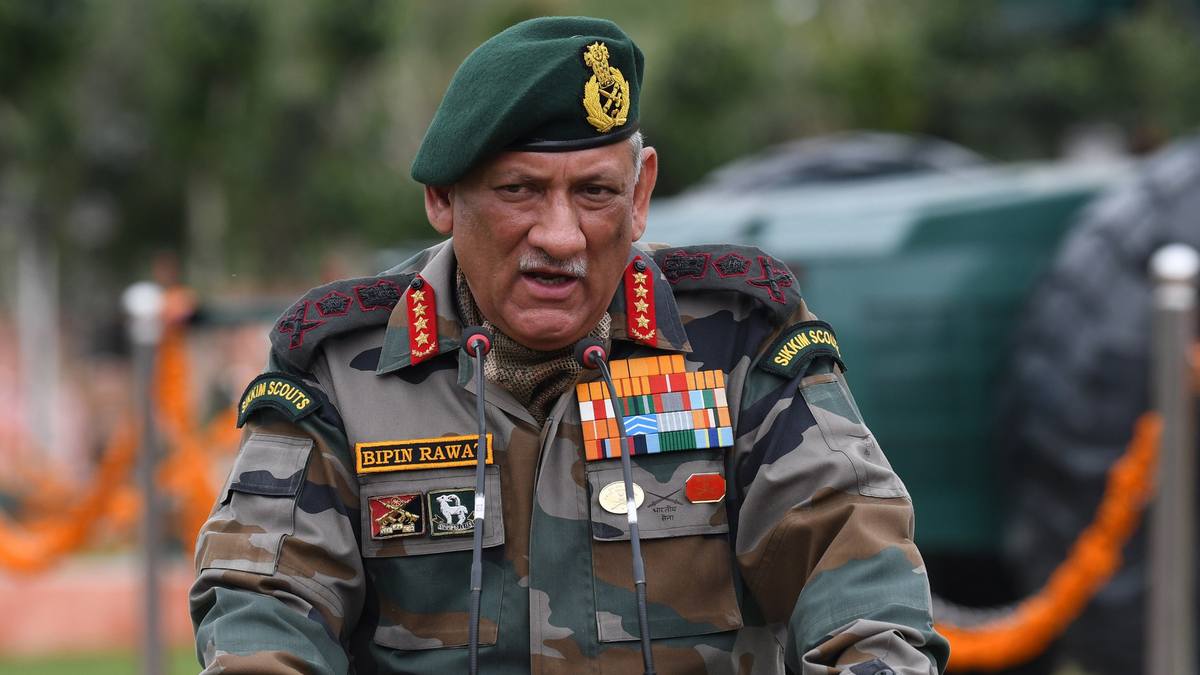Agencies
New Delhi, January 12:
Chief of Defence Staff Gen Bipin Rawat is on a visit to Ladakh to review the country’s overall military preparedness as thousands of Indian and Chinese troops remained deployed in a high state of combat readiness in various mountainous locations in the region amid the eight-month-long border standoff.
Official sources said today that Gen Rawat will be briefed by Lt Gen PGK Menon, the commander of the Leh-based 14 Corps, popularly known as Fire and Fury Corps, and other senior military officials on the dynamic security matrix in eastern Ladakh.
The visit of the Chief of Defence Staff (CDS) to Ladakh comes days after he toured several key installations including “forward most air maintained” posts in Dibang Valley, Lohit sector and Subansiri Valley near the Line of Actual Control(LAC) in Arunachal Pradesh.
“The CDS will review the overall security scenario in the eastern Ladakh region,” said a source.
Gen Rawat is also expected to travel to Kashmir from Ladakh tomorrow.
The Army and the Indian Air Force(IAF) have been maintaining a high state of operational readiness along the nearly 3,500-km LAC with China in view of the military standoff in Eastern Ladakh.
Nearly 50,000 troops of the Indian Army are deployed in various locations in Eastern Ladakh as multiple rounds of military and diplomatic talks between the two sides have not yielded any concrete outcome to resolve the faceoff. China has also deployed an equal number of troops, according to officials.
The eighth and last round of military talks had taken place on November 6 during which India and China broadly discussed disengagement of troops from specific friction points.
The CDS has been part of the top military brass framing strategies to enhance India’s military prowess in view of the Sino-India standoff.
Last month, Chief of Army Staff Gen MM Naravane had visited Eastern Ladakh to review the ground situation in the region that is also experiencing harsh winter.
The standoff erupted on May 5 last year following violent clashes between the troops of the Indian Army and the Chinese People’s Liberation Army(PLA) in the Pangong lake area. The incident in Pangong Tso was followed by a similar incident in North Sikkim on May 9.
Meanwhile, Air Chief Marshal RKS Bhadauria today also visited the strategically located Daulat Beg Oldie, Thoise and Nyoma advanced landing strips in Ladakh and undertook a comprehensive review of the IAF’s preparedness in the region in view of the eight-month-long border standoff between India and China, officials said.
The Chief of Air Staff interacted with field commanders and was briefed on the operational readiness as well as the status of deployment of forces at the high-altitude airbases, they said.
The Daulat Beg Oldi Advanced Landing Ground (ALG) is located close to the Line of Actual Control (LAC) at an altitude of 16,700 ft and is known as the highest airfield in the world. The Nyoma airfield is located at a height of around 13,000 feet.
Air Chief Marshal Bhadauria also interacted with Indian Army personnel deployed at these locations, they added.
“During his visit to Thoise, he reviewed the ongoing logistic operations for support and sustenance of troops in the winter season,” the IAF said in a statement
It said he also visited Daulat Beg Oldie and Nyoma ALGs where he was given a security overview.
At Daulat Beg Oldie, Air Chief Marshal Bhadauria laid a wreath in honour of the fallen heroes.
Prior to his departure, the Chief of Air Staff joined Chief of Defence Staff Gen Bipin Rawat for a comprehensive discussion on operational matters with senior IAF and Indian Army Commanders at Leh air force station, the IAF said.
“The Chief of Air Staff conveyed his deep appreciation for the exceptionally high levels of morale and dedication with which all personnel continue to maintain operational preparedness despite the harsh weather and an inhospitable terrain,” it said.




